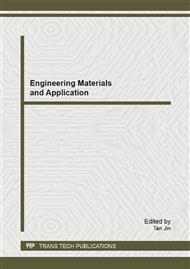p.289
p.295
p.302
p.306
p.312
p.317
p.321
p.327
p.333
Numerical Simulation of Mesoscopic Concrete Cracking Evolution
Abstract:
Monte Carlo method and the Fuller curve are used to calculate the amount of the aggregate of concrete. The programmer of generating mesoscopic concrete is written to simulate the cracking evolution through two-dimensional plane. In the mesoscopic concrete, the sample is described by a Tri-phase material which consists of aggregate, matrices and interface. Based on the model, a study on how the cracks generate, develop and cut through in the concrete. The results show that: the interface is the vulnerable part of the concrete, the determination of the parameter and the damage criterion of the interface element is the governing factor. During the cracking evolution, the interface element destroyed firstly, and then the crack expense along the edge of the aggregates, cutting through the concrete and damaged finally. Numerical simulation of mesoscopic concrete cracking evolution can be used to understand and describe the damage style and strength characters.
Info:
Periodical:
Pages:
312-316
Citation:
Online since:
January 2013
Authors:
Keywords:
Price:
Сopyright:
© 2013 Trans Tech Publications Ltd. All Rights Reserved
Share:
Citation:


